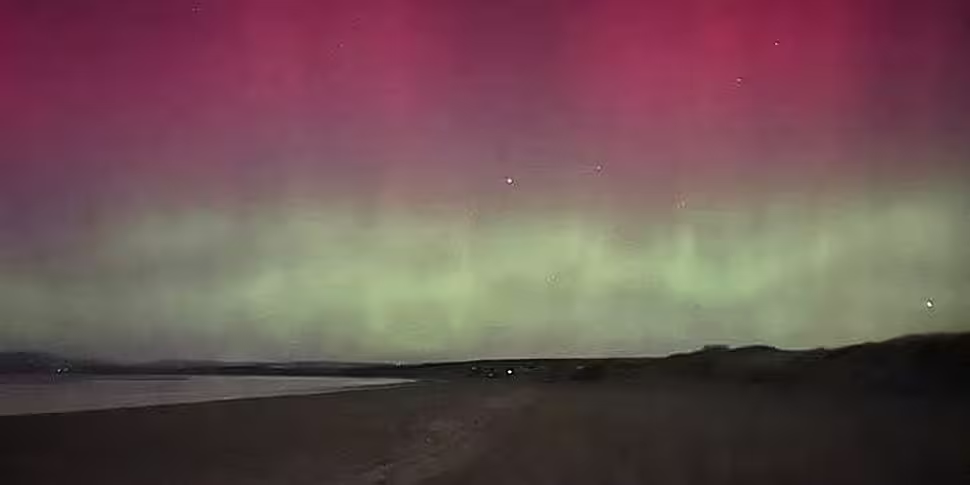Sky-gazers could be set for another Northern Lights treat tonight with the Aurora set to be visible from Ireland once again.
It comes after the spectacular light display was seen all along the northern coast last night.
Also known as Aurora Borealis, the Northern Lights are usually best seen in high latitude regions closer to the Arctic - such as Scandinavia.
Last night, however, several people snapped amazing photos and videos in Donegal and further afield.
The spectacular sight of the Northern Lights over Dublin city tonight. Taken onboard a @Ryanair flight between @LPL_Airport and @DublinAirport.
📸 @_KimCon pic.twitter.com/87iHbfWy0v— Dublin Airport (@DublinAirport) February 26, 2023
Well that was an unexpected treat. #NorthernLights #Ireland pic.twitter.com/trl0lAbqll
— Sara O'Neill Artist 🐚 (@SaraONeillArt) February 26, 2023
The Northern Lights over the past hour on the north coast of Ireland 🎆🌟🌙🎇 pic.twitter.com/0k87AiAhNz
— Al Mennie (@AlMennie) February 26, 2023
Northern Lights in County Donegal.
All my life I’ve wanted to see them. There they are outside my front door 🥹 pic.twitter.com/9jzvpG01Wa— Ryder 🇮🇪 🇪🇺 (@Ryder56004614) February 26, 2023
The Northern Lights spotted south to County Armagh tonight. Ardmore near Lurgan. Photos from Julie Timlin. #aurora #NorthernLights pic.twitter.com/3KJTFJZcOC
— Barra Best (@barrabest) February 26, 2023
Northern Lights over Dublin on the Liverpool - Dublin @Ryanair flight tonight! @CarlowWeather thanks for the heads up! pic.twitter.com/l7gXh4NYaA
— Kim (@_KimCon) February 26, 2023
Lovely wee show of the Northern Lights / Aurora Borealis over Buncrana here in Inishowen, County Donegal now. Delighted loads of folks got to see them to! Pale green and reds to the naked eye! @wildatlanticway @GoToIreland @donegal @govisitdonegal @Visit_Inishowen @Failte_Ireland pic.twitter.com/pUn8ZTJpdm
— Adam Rory Porter (@adamroryporter) February 26, 2023
An aurora is caused by atoms and molecules in our atmosphere colliding with particles from the Sun.
The wavy patterns of light are caused by the lines of force in the Earth's magnetic field, and the different colours are made by different gasses - the green is characteristic of oxygen, while the purple, blue or pink are caused by nitrogen.
The lowest part of an Aurora is usually around 80 miles from Earth's surface but the top could be many hundreds of miles above Earth.
The further north you are, the more likely you are to see the display.
The conditions still need to be right - dark and clear nights, with as little light pollution as possible.
Additional reporting: IRN









